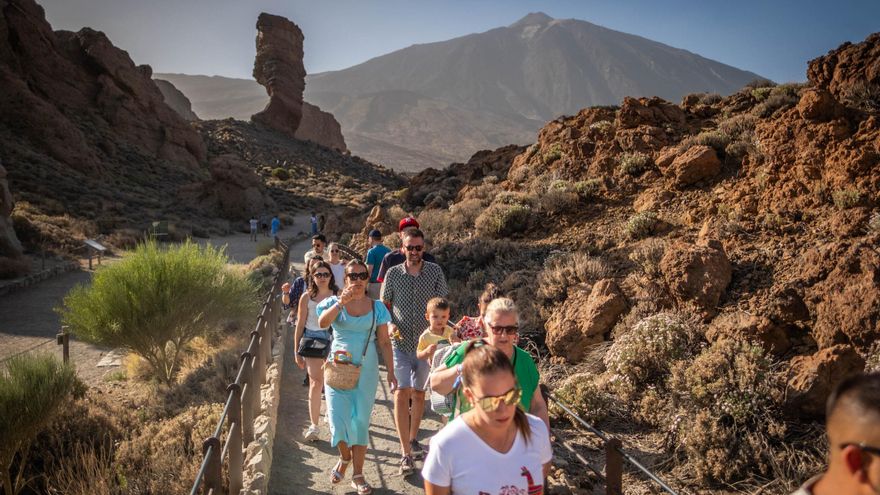Teide National Park Sets New Visitor Record
For the first time in its history, Teide National Park has welcomed over five million annual visitors. Spain’s Ministry for Ecological Transition confirmed the official 2024 figures for the country’s 16 most protected natural spaces, with Tenerife’s volcanic crown jewel emerging as the undisputed leader—not just nationally but across Europe—and ranking among the world’s top 10 most visited national parks.
A Geological Wonder Drawing Global Attention
Last year, 5,242,653 visitors experienced the otherworldly landscapes and unique biodiversity of what the ancient Guanches called “Guayota’s dwelling”—their name for the devil they believed inhabited the volcano. This geological marvel boasts the Atlantic’s highest point at 3,715 meters above sea level (7,500 meters from the ocean floor), making it the world’s third-tallest volcano after Hawaii’s Mauna Kea and Mauna Loa. Its staggering elevation also positions Tenerife as the planet’s tenth-highest island.
The Double-Edged Sword of Popularity
The record comes with both celebration and concern. On one hand, these numbers confirm the global fascination with the Canary Islands’ natural treasure. Teide receives more than double the visitors of Spain’s second most popular national park, Sierra de Guadarrama (2.4 million), and similarly eclipses Europe’s top contender, Croatia’s Plitvice Lakes (also ~2.4 million).
However, this unprecedented footfall strains the delicate high-mountain ecosystem, where temperatures swing between scorching heat and freezing cold. Wolfredo Wildpret, honorary member of Teide National Park’s board and University of La Laguna botany professor, sounds the alarm: “We’re dangerously testing the limits of this fragile, one-of-a-kind natural treasure.” The 91-year-old expert, who has dedicated his life to studying the park’s 58 endemic plant species across its 190 square kilometers, advocates for visitor limits and environmental fees like those implemented in other global parks.
Balancing Access and Preservation
Tenerife’s Council President Rosa Dávila acknowledges the congestion at Spain’s highest point, noting this reflects a global trend seen in Yosemite and the Swiss Alps. “Growing interest in unique natural environments is normal,” she states, “but must be managed responsibly.” Emphasizing that Teide is “far more than a park—it’s our crown jewel,” Dávila pledges to make it “a sustainability model for all Spain.”
Pending full transfer of park management to Tenerife’s local government, planned measures include revising the park’s master plan, implementing shuttle buses, enhancing surveillance, and introducing an eco-fee for non-residents starting next year—with all revenue reinvested in conservation, infrastructure, and environmental education.
Current Protection Measures
Existing safeguards include a 300-person daily limit for crater ascents, strategically placed trail counters, nine surveillance cameras at key access points, expanded fiber optic networks, and additional rangers for night patrols. As Wildpret reminds visitors: “This isn’t a recreational area—poor parking choices or trampling a retama plant have far greater consequences than most realize.” The era of excusing impacts due to the highway crossing the park, he notes, has passed—few now use this route for north-south transit.

